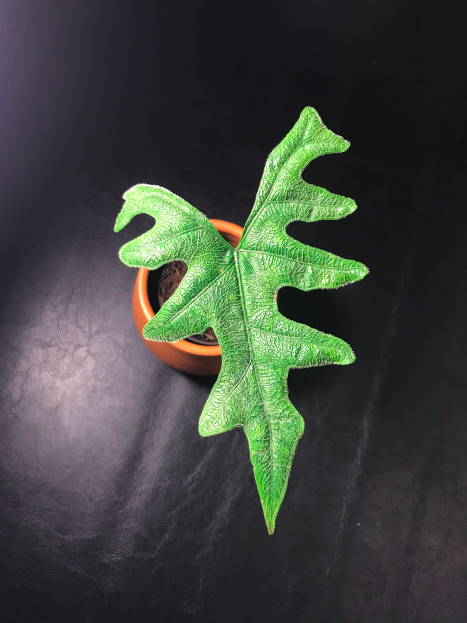
Alocasia Jacklyn, also known as the "Jacklyn Elephant Ear," is a stunning houseplant that stands out for its dramatic, arrow-shaped leaves and striking dark green coloration with lighter veins. This tropical beauty is a popular choice for those looking to add some bold foliage to their indoor spaces. While it can be a bit finicky in terms of care, with the right environment and attention, Alocasia Jacklyn can thrive and become a statement piece in your home.
Alocasia Jacklyn thrives in bright, indirect light. It prefers a well-lit spot but should not be exposed to direct sunlight, as this can scorch its delicate leaves. A location near a window with sheer curtains or a spot that receives filtered light is ideal. If the plant doesn't get enough light, it may become leggy, and the leaves could lose their vibrant color.
If you’re growing it in a dimly lit room, consider supplementing with a grow light to ensure it receives enough energy for healthy growth.
Alocasia Jacklyn enjoys consistent moisture, but like most Alocasia varieties, it is sensitive to overwatering. The key is to keep the soil slightly moist but not over saturated. Water your plant when the top 1-2 inches of soil feel dry to the touch. Be sure to water thoroughly, allowing the excess water to drain from the bottom of the pot.
During the winter months, the plant’s growth slows down, so you may need to water less frequently. Always check the soil moisture before watering to avoid root rot, which is a common issue for Alocasia plants when they are overwatered.
Alocasia Jacklyn thrives in warm, humid environments. It prefers temperatures between 65°F and 80°F (18°C to 27°C), making it well-suited for indoor living. Avoid placing it near cold drafts or air conditioning vents, as it is sensitive to temperature fluctuations.
This plant also loves high humidity. To keep it happy, aim for a humidity level of 60% or higher. If your home has dry air, especially during the winter months, you can increase the humidity around the plant by misting it regularly, using a humidifier, or placing the pot on a humidity tray filled with water and pebbles.
Alocasia Jacklyn prefers well-draining, airy soil. A mix designed for tropical plants, such as a combination of peat, perlite, and orchid bark, will provide the right balance of moisture retention and drainage. Your plants soil should be kept slightly moist but not soggy.
When repotting, choose a pot that is 1 to 2 inches larger in diameter than the current one. Ensure that your pot has drainage holes to prevent water from accumulating at the bottom, which could lead to root rot. Repot your plant every 1-2 years or when it outgrows its current container.
During the growing season (spring and summer), Alocasia Jacklyn benefits from regular feeding. Use a balanced, water-soluble fertilizer diluted to half strength. Fertilize once a month to promote healthy growth and vibrant foliage.
In the fall and winter, the plant’s growth slows down, so you can reduce fertilization or stop altogether until the next growing season. Over-fertilizing can lead to fertilizer burn, so always follow the recommended dosage.
Alocasia Jacklyn generally requires minimal pruning. However, you can trim off any yellowing or damaged leaves to keep the plant looking tidy. It’s important to use clean, sharp scissors or pruning shears to avoid introducing bacteria or fungi to the plant.
If the plant becomes too tall or leggy, you can trim the stems to encourage new growth. Be cautious when handling the plant, as the sap can irritate the skin or eyes, so wearing gloves is recommended when pruning.
Alocasia Jacklyn can be propagated through division. When repotting, carefully separate the rhizomes (underground stems) into smaller sections, ensuring each section has roots and at least one healthy leaf. Plant the divisions in their own pots with fresh soil and keep them in a warm, humid environment until they establish new growth.
Propagation through leaf cuttings is not typically successful for Alocasia Jacklyn, as it does not easily root from cuttings. Division is the most reliable method for creating new plants.
No, Alocasia Jacklyn is not pet safe. Like many Alocasia species, it contains calcium oxalate crystals, which can be toxic to pets if ingested. The plant can cause irritation to the mouth, throat, and digestive system of cats, dogs, and other animals. If you have pets in your home, it’s best to keep the plant out of their reach to prevent accidental ingestion.